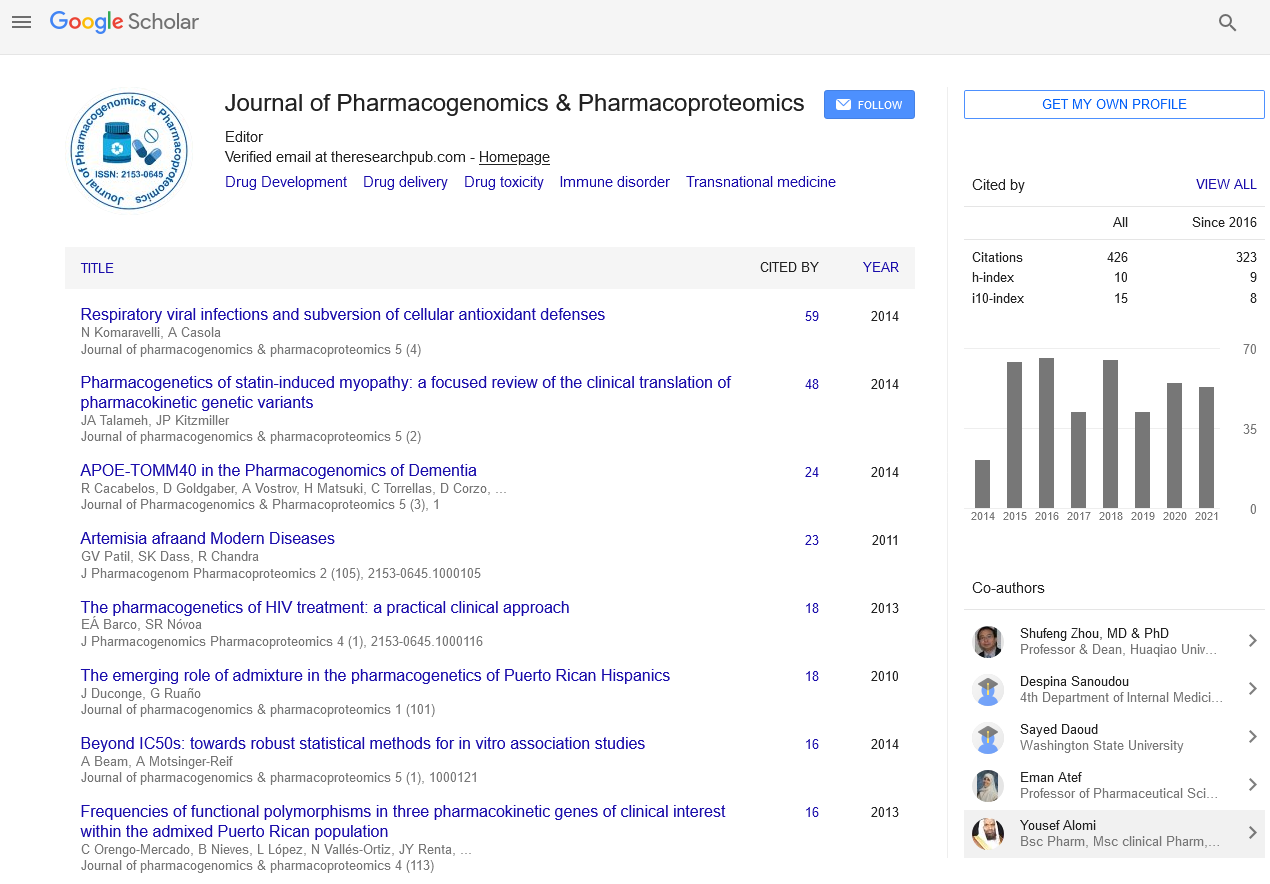Indexed In
- Open J Gate
- Genamics JournalSeek
- Academic Keys
- JournalTOCs
- ResearchBible
- Electronic Journals Library
- RefSeek
- Hamdard University
- EBSCO A-Z
- OCLC- WorldCat
- Proquest Summons
- SWB online catalog
- Virtual Library of Biology (vifabio)
- Publons
- MIAR
- Euro Pub
- Google Scholar
Useful Links
Share This Page
Journal Flyer

Open Access Journals
- Agri and Aquaculture
- Biochemistry
- Bioinformatics & Systems Biology
- Business & Management
- Chemistry
- Clinical Sciences
- Engineering
- Food & Nutrition
- General Science
- Genetics & Molecular Biology
- Immunology & Microbiology
- Medical Sciences
- Neuroscience & Psychology
- Nursing & Health Care
- Pharmaceutical Sciences
Abstract
Protein-Ligand Binding Affinity Prediction: quantifying the entropic contribution with artificial intelligence and quantum chemistry
Evangelidis T
Despite the advances in synthetic chemistry and ligand binding assay technologies, the time and cost of synthesizing and testing thousands of compounds is prohibitive. Herein, will be presented deepScaffOpt algorithm for highly accurate, 1-sec fast, 2D-ligand based binding affinity prediction with minimal human input. deepScaffOpt employs artificial intelligence to build “on the fly” a receptor-specific Meta-Predictor that combines the output of multiple deep neural networks, which are engineered from feature vectors
(“warheads”) carrying information only about 2D chemical structure. The arsenal of deepScaffOpt comprises warheads suitable for a wide range of molecules, including macrocycles, covalent inhibitors, peptidomimetics, even small fragments. deepScaffOpt’s automated scoring protocol achieved top performance in D3R Grand Challenges 2017 & 2018, and could predict free energies significantly closer to the experimental ones than Free Energy Perturbations (FEP). Unlike structure-based methods, deepScaffOpt can work well in the absence of receptor structure, and can be easily adapted for virtual screening of large chemical libraries to discover new diverse hit compounds, as well as off-target prediction and drug repurposing. However, in the absence of training samples, one must resort to first principles. Therefore, we develop in parallel semiempirical quantum mechanical (SQM) free energy methods [2]. We have demonstrated the superiority of SQM scoring protocols in native pose recognition and hit identification over the most widely used docking scoring functions on a variety of systems where binding was dominated by Enthalpy. A new SQM-based ligand conformational Entropy descriptor was recently introduced, which can be coupled both with physics based and machine learning methods for superior performance. In the case studies that will be shown in this presentation, Enthalpy alone failed to explain inhibitory activity, but SQMscoring enhanced with the Entropy descriptor reversed the situation. Analogous effects were observed when the Entropy descriptor was incorporated into deepScaffOpt’s warheads.
Published Date: 2020-09-16;


